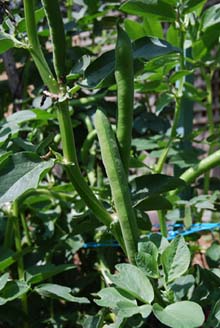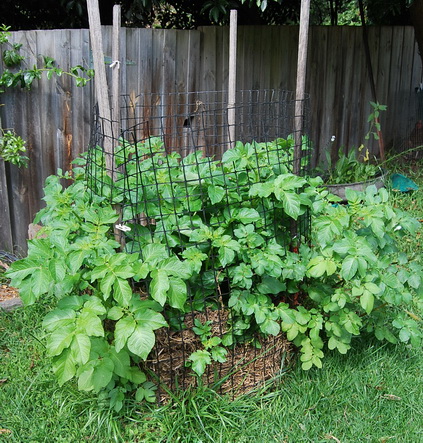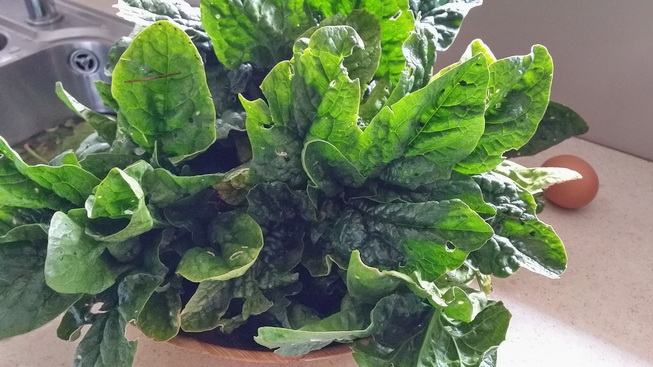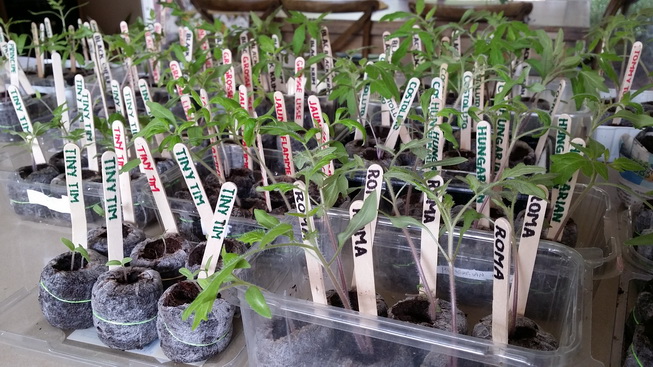October in My Green Garden

What a great month to get planting in Melbourne. Spring is definitely here, the ground is nicely wet after some rain and warming up, ready to get those summer vegetables in.
In the meantime:
- Soil preparation is key to great crops and this should be done before planting the crops. So for the beds where tomatoes (and their relatives in the solanum family - eggplant, chillies and capsicum) are going in, my go-to for great soil is well-rotted compost, laced with some all purpose organic fertiliser pellets (for extra nutrition) and some rock dust, which provides slow release minerals to the soil. Let all of this settle for a couple of weeks before popping the seedlings in. That way the soil microbes are activated by all of the feed and ready to help the new seedlings settle in to a great start.
- For other 'hungry' summer vegies, such as those in the cucurbit family (cucumbers, zucchini and pumpkin) I do the same as for solanums except I don't add as much actual fertiliser. A couple of years ago I think I may have been over fertilising my zucchini and they didn't want to flower until much later in the season. This told me that they were too well fed and so not stressed about putting on flowers to set the zucchini. Since then, I have been more sparing and the zucchini have produced much better. (Lesson in gardening: learn from your mistakes!)
- In the meantime, I will keep up my seed-sowing of more summer veg. For the ones that need warm soil to start, I give them a heat boost in my hot compost bin and as soon as they show signs of growth, they come out into my little greenhouse. This provides temperatures warm enough to keep them growing and then they get covered up in the evening to protect them from still cool nights. I'll always sow more than I think I will need as, inevitably, some get eaten by pests before they are large enough to withstand attack. There is still time to plant the cucurbits indirectly in this hot-bed method as they germinate and grow large quickly.
- Start sowing some summer beans directly in the soil. While the soil might not be quite warm enough at the start of the month for the heat loving solanums, it is adequate now for beans. Start a crop now and then again in a few weeks if you have the space for continual cropping.
- Continue to harvest some of the winter-sown vegies, such as snow peas, peas and start on the broadbeans. When they are done, I’ll make the most of the nitrogen-fixing power of those nodules on the roots and just leave them to rot in the soil. So rather than pull them up, I’ll cut the plants to the ground. The stalks will compost nicely.
- Continue to keep water up to the garlic which should be doing its thing and fattening up its underground bulb. As the days get longer this is the time that the developing bulb gets bigger, so some regular (fortnightly) feeding with liquid organic fertiliser or seaweed concentrate won’t go astray either. For more info on garlic have a read of Growing Great Garlic.
- Other alliums, such as spring onions and leeks will soon be going to flower. I’ll leave one or two so I can collect seed from them, but the rest will go to the kitchen to be used. In the meantime, I continue to sow spring onion seeds to get a continuous crop of this indispensable onion.
- Potatoes are growing
 above ground in my vertical mesh space-saving planter. I changed the way I planted them this year and so I am hoping for a better harvest. Instead of adding more and more straw and compost as they grow up, I planted 3 distinct layers and covered them all up. Now I have the lower 2 layers growing sideways from the tower.
above ground in my vertical mesh space-saving planter. I changed the way I planted them this year and so I am hoping for a better harvest. Instead of adding more and more straw and compost as they grow up, I planted 3 distinct layers and covered them all up. Now I have the lower 2 layers growing sideways from the tower. - In the meantime, I will keep up my seed-sowing in my little greenhouse. I give them a heat boost in my hot compost bin and as soon as they show signs of growth, they come out into my little greenhouse. This provides temperatures warm enough to keep them growing and then they get covered up in the evening to protect them from still cool nights.
- As the weather warms up, I'll be putting mulch down around the fruit trees. I've waited to do this but it will need to be done to keep precious water where it is needed. In my case, I'll also need to put a protective cover over the mulch, in the way of mesh, to stop those pesky hens of mine digging it over.
- My asparagus patch has been providing us with spears of thick and succulent asparagus. It will continue to produce, but in deference to this great vegetable, I only harvest until the end of the season and then let the rest of it turn into asparagus fern, which will die back to feed the underground root system so that it continues to produce for us, year after year.
- Continue to eat, eat, eat my way through the garden with loads of greens (silverbeet, mustard greens, cavolo nero etc), carrots being pulled up, salad greens (including the beetroot which has healthy top growth) and the legumes. No fruit at the moment but plenty to look forward to with the mulberries to fatten up and mature for November harvesting.
IN THE PRESERVING KITCHEN
October is a relatively lean month for preserving as the bounty from the garden is mainly green. This means that the excess vegies need to be blanched before freezing. In the case of the abundant coriander all bolting now, I like to make a Thai-style paste of the roots which I freeze and bring out as a marinade ready for the barbeque season upon us. It's the month where I am concentrating on being outside in the garden, rather than in the kitchen (or the calm before the onslaught of the summer bounty!).

